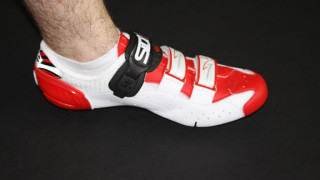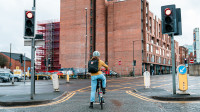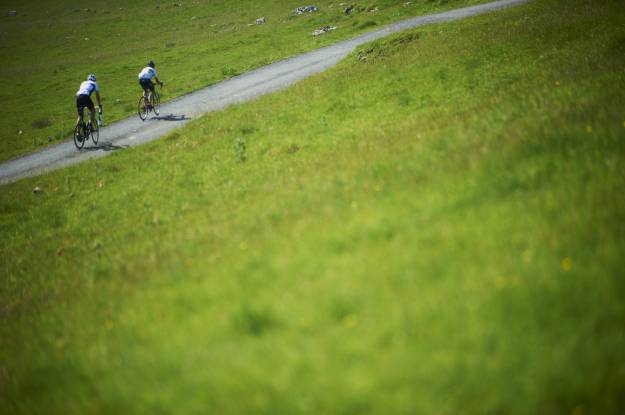Knowledge Level: Intermediate
Whether it is blisters, a hot-spot or numbness, foot pain and discomfort can turn a brilliant bike ride into pedal stroke purgatory. Find out what might be causing your foot woes and what to do about it.
Blisters and rubbing
Blisters are a raised area of skin with a watery fluid inside. They occur due to repeated rubbing, friction and pressure. They are always preceded by a warning hot-spot of reddened sore skin which, if ignored, results in a tear occurring in the top layer of skin which the body fills with fluid as a protective measure.
With thousands of pedal strokes being made on even a relatively short ride, it’s easy to see how poorly fitting shoes can lead to blisters forming.
Hot-foot
'Hot-foot', characterised by a burning pain in the ball of the foot, is caused by the foot swelling on long or hot rides, especially hilly ones with prolonged periods of high pedal pressure, and is due to compression of the nerves between the heads of each of the foot’s five long metatarsal bones.
These heads are located at the widest part of the foot. Although it may feel as though your feet are on fire, there’s no actual heat being generated. The burning sensation is simply due to pressure on the nerves.
Switch to cycling shoes
If you’re not already riding in stiff-soled cycling specific shoes, make the change now. The rigid reinforced soles transfer power more efficiently, prevent potentially fatiguing and injury causing repetitive flexing of the feet and reduce and disperse pressure on the feet from the pedal platforms.
Shoe fit
Cycling shoes should fit perfectly. Although online deals can be tempting, you’re far more likely to find your perfect fitting make and model if you make a trip to a bike shop and try a range of pairs on. Your foot should be cradled securely as any movement will reduce efficiency and may cause blisters. They should not feel restrictive though and remember, on long and hot rides, your feet will swell. If you do tend to suffer from Hot-Foot, look for shoes with wider and higher toe boxes.
Some shoes offer DIY custom fitting, where you heat the shoes in your oven and then mould to your feet, and this can help you get that perfect fit. It can also be worth considering insoles, orthotics or metatarsal buttons if you continue to suffer but it’s advisable to seek professional advice.
Look for shoes with at least two adjustment straps. The top strap nearest your ankle holds the foot in the shoe and should be tightened as much as necessary to prevent any movement. The lower strap should be left fairly loose to allow maximum room for the metatarsal area.
Bike fit
The majority of discomfort issues on the bike can be often be resolved with a professional bike fit. Foot issues may be down to a leg length discrepancy so be sure to find a fitter who is qualified to make anatomical assessments as part of the fitting process. Another option is to check your bike fit at home, following the advice in this DIY bike fit article.
Cleat set-up
Check that you have your cleats set-up correctly. If you do suffer from Hot-foot, simply moving the cleat back a few millimetres from this neutral position may help alleviate the pressure on your metatarsals. Make adjustments incrementally though and remember that you may also have to tweak other elements of your bike set-up, such as saddle height, to accommodate such a change.
Foot care and hygiene
Take care of your feet. Clean and healthy feet with supple skin are far less likely to crack and blister than uncared for feet. Be diligent about washing and drying your feet, keep toenails short and remove dead or hardened skin. Be aware of any warning soreness or hotspots and take action before allowing a blister to develop.
Socks
In warmer conditions, thinner socks can give your feet a bit more room to swell. Choose wicking fabrics as moisture around the feet is more likely to lead to rubbing and blistering. When it gets colder, thicker socks may increase pressure in your shoes so either adjust the straps to accommodate this or consider a slightly larger size pair of shoes or booties for winter riding.
Pedal platform
It can be worth experimenting with different pedal platforms if you suffer from Hot-Foot. In general a wider cleat and platform will disperse the pressure better. Recessed mountain biking and commuting pedal and cleat combinations can be especially bad as they tend to have relatively small contact areas. Although these systems are great for the on and off pedalling pressures of mountain biking or relatively short commutes, for longer road rides, a dedicated road cleat and pedal set-up will be more comfortable.












